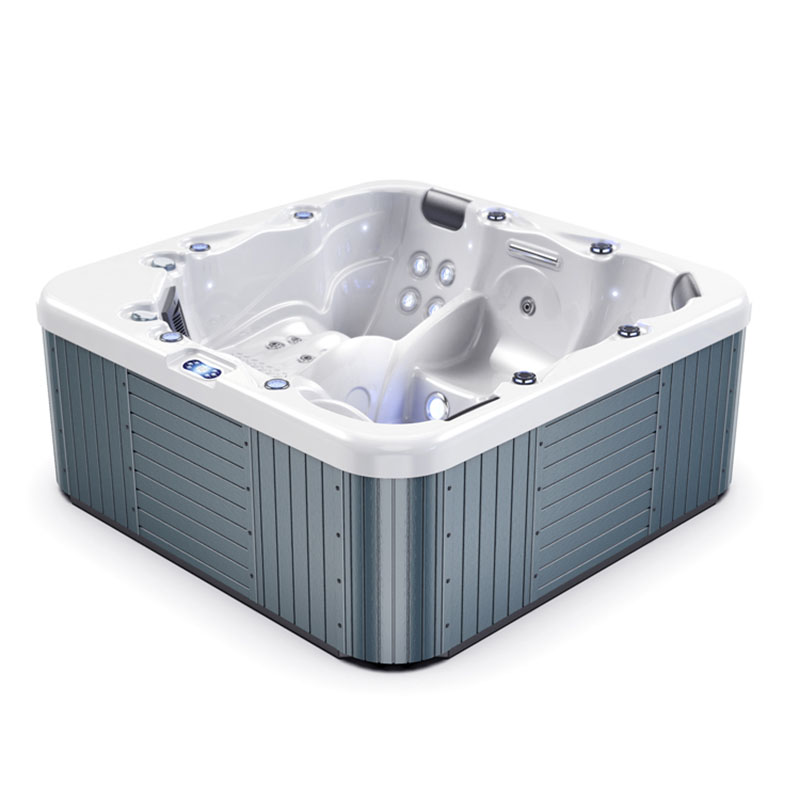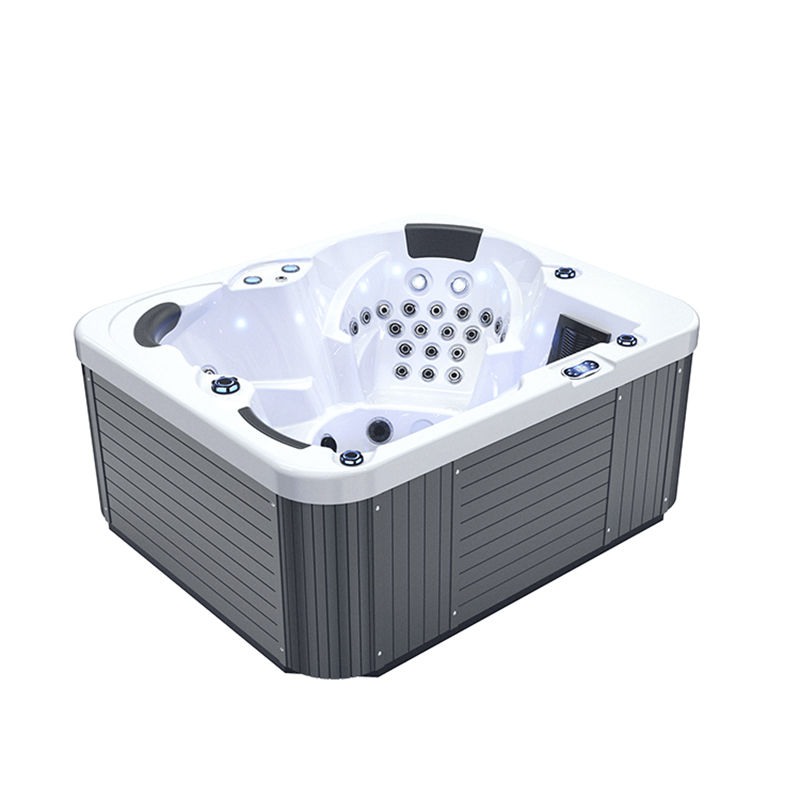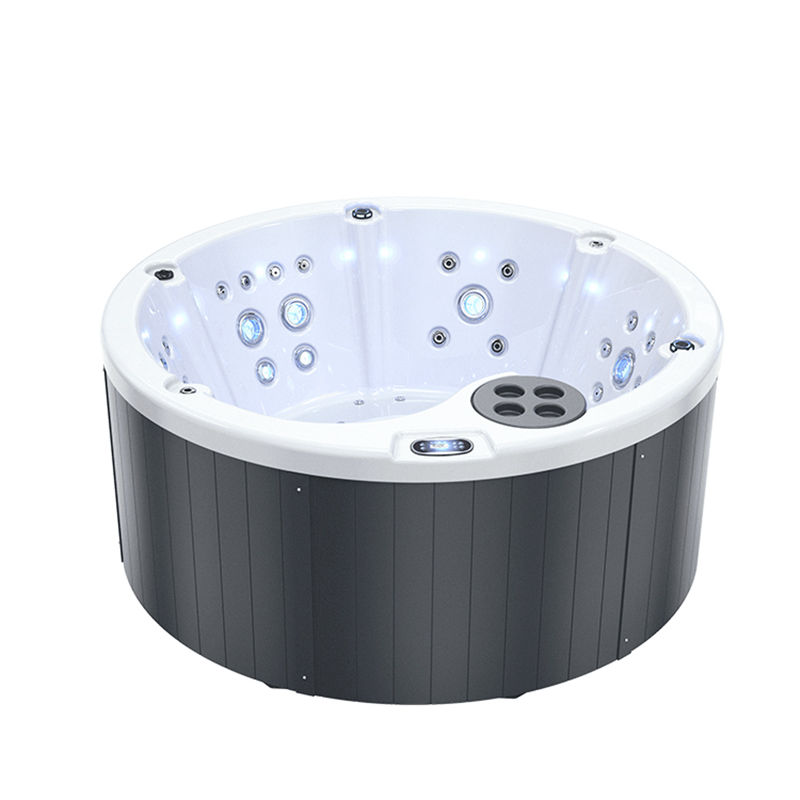In daily use, the comfort of a spa jacuzzi bathtub is closely related to water quality safety, and one of the key factors affecting water balance is pH level.
Many users often overlook this parameter during maintenance, assuming that clear water means cleanliness. In fact, when the pH level of a spa jacuzzi bathtub is too high, it can cause a series of problems for the device, skin, disinfection effectiveness, and the overall user experience.
This article will systematically answer this question, deeply analyzing the real impact of "excessively high pH" from the perspectives of water quality principles, chemical reactions, equipment wear and tear, water quality changes, and solutions, and providing scientific maintenance advice to help spa jacuzzi bathtub users maintain optimal performance.

Why is the pH level of a spa jacuzzi bathtub so important?
pH level is an indicator of the acid-base balance in water, ranging from 0 to 14, with pH=7 being neutral.
• pH < 7: Water is acidic;
• pH = 7: Water is neutral;
• pH > 7: Water is alkaline.
For most home or commercial spa jacuzzi bathtubs, the ideal pH value should be maintained between 7.2 and 7.8.
This range not only keeps the water clear but also ensures the stability of disinfectants (such as chlorine or bromine) and reduces irritation to equipment and skin.
Once the pH value deviates from this balance, especially rising above 8.0, it triggers a series of chemical and physical reactions, disrupting the overall balance of the system.
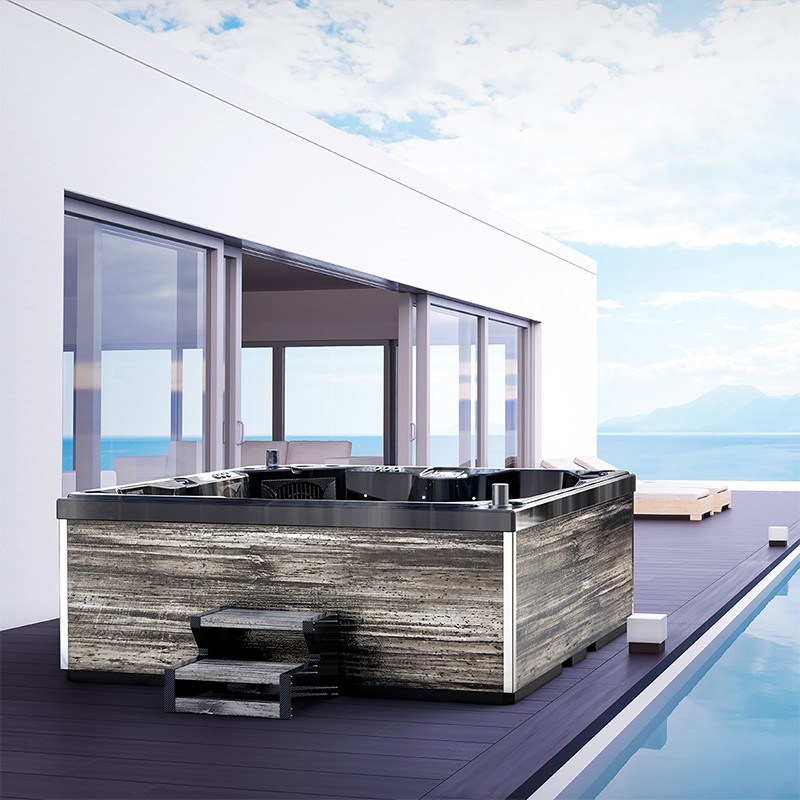
Why does the pH value of a spa jacuzzi bathtub rise?
A rise in pH value usually stems from a combination of daily operational or environmental factors. Here are some common situations:
1. The water source is too alkaline
Tap water or well water itself has a high pH value (especially in hard water areas), which directly increases the overall alkalinity of the water in the spa jacuzzi bathtub.
2. Cleaning Agent Residue
Using improper cleaning products or bath liquids containing alkaline chemicals can lead to the accumulation of alkaline substances in the water.
3. Reduced Carbon Dioxide in Water
When the showerhead or water pump runs for an extended period, excessive release of carbon dioxide disrupts the carbonic acid balance, naturally raising the pH level.
4. Overuse of Certain Disinfectants
Some low-quality chlorine tablets or alkaline disinfectants can alter the chemical properties of water, causing pH imbalance.
These seemingly minor factors, amplified by the circulation system, can result in a high pH level in the entire spa jacuzzi bathtub.
What are the effects of a high pH level on the water quality of a spa jacuzzi bathtub?
When the pH level exceeds 8.0, the chemical balance of the water is disrupted, primarily resulting in turbidity and sediment formation in the spa jacuzzi bathtub.
1. Water becomes cloudy or whitish
Excessive alkalinity causes dissolved calcium and magnesium ions in the water to combine with carbonate ions, forming white particles or precipitates, making the water appear "whitish."
2. Excessive scale formation
A higher pH means lower solubility of calcium carbonate, causing scale to adhere to the spa jacuzzi bathtub nozzles, heaters, pipes, and pumps, affecting circulation speed.
3. Chlorine disinfection effectiveness drops drastically
When the water's pH rises from 7.5 to 8.5, the disinfection efficiency of chlorine decreases by approximately 90%.
This means that even with sufficient disinfectant, bacterial growth cannot be effectively controlled.
4. Foam and oil film formation is easier
At high pH, changes in water surface tension make it easier for grease and soap residue to float to the surface, forming foam or a thin film.
These problems not only affect appearance but also increase the difficulty and cost of maintaining and using the spa jacuzzi bathtub.
What damage does excessively high pH levels cause to spa jacuzzi bathtubs?
Besides changes in water quality, pH imbalance directly affects the mechanical structure and material lifespan of the spa jacuzzi bathtub.
1. Scale buildup in nozzles and pipes
Highly alkaline water easily causes minerals to adhere to the inside of the nozzles.
Smaller or clogged nozzles lead to uneven water pressure and weaker aeration.
2. Reduced heater efficiency
Scale buildup on the heating element surface significantly reduces heat transfer efficiency, increases energy consumption, and may even damage components due to overheating.
3. Increased wear on pump shaft seals
Scale buildup combined with alkaline water causes rubber seals to harden and lose elasticity, increasing the risk of leaks.
4. Surface fading or loss of shine
Excessive alkalinity corrodes the protective layer of acrylic or plastic panels, making the surface rough, white, and even causing fine cracks.
5. Increased Burden on the Filtration System
Scale and sediment can clog filter cartridges, shorten filter life, and reduce filtration efficiency.
These problems are usually not immediately apparent but accumulate gradually over long-term use, posing a potential threat to the lifespan of your spa jacuzzi bathtub.
What are the effects of excessively high pH levels on skin and health?
While "alkaline water" is sometimes described in marketing as "gentle on the skin," this alkalinity is not safe for a reusable spa environment.
1. Dry and Itchy Skin
High pH levels can disrupt the slightly acidic protective film on the skin's surface, dissolving the sebum film and leading to tightness, dryness, and even itching.
2. Eye and Respiratory Irritation
Water with a pH above 8.0 can easily irritate the mucous membranes of the eyes and respiratory tract, causing redness, stinging, or mild discomfort.
3. Reduced Bathing Comfort
Highly alkaline water alters the feel of the water, making the skin slippery during bathing and leaving a "soap film" feeling on the body.
Therefore, to balance comfort and safety, the water quality in a spa jacuzzi bathtub must be maintained within the optimal pH balance range for human skin.

How to determine if the pH value of a spa jacuzzi bathtub is too high?
Determining whether the pH value is excessive cannot be done by feeling or visual observation; it must rely on scientific testing.
Common testing methods include:
1. pH test strips
Immerse pH test strips in the spa jacuzzi bathtub water; the color change corresponds to the scale reading.
Advantages: Convenient, low cost, suitable for home use.
2. Digital pH meter
This device detects the potential difference in the water through electrodes, accurately displaying the pH value.
More suitable for places with high requirements for spa jacuzzi bathtub water quality.
3. Integrated water quality testing kit
This kit can simultaneously measure multiple indicators such as pH, residual chlorine, and alkalinity, providing a more comprehensive understanding of the water quality.
Testing should be conducted when the water temperature is stable and the spa jacuzzi bathtub is running to ensure accurate data.
If the pH value is found to be higher than 7.8, adjustments should be made immediately.
How to lower an excessively high pH value in a spa jacuzzi bathtub?
When test results show excessive alkalinity, effective adjustments can be made using the following methods:
1. Use a professional pH reducer
• Common ingredients are sodium metabisulfite (NaHSO₄) or diluted sulfuric acid;
• Always read the instructions before use and add according to the water volume ratio;
• After adding, run the circulation system for 20-30 minutes and test the pH value again.
2. Use the dilution method
• If the alkalinity is not severely high, partially drain the water and add neutral tap water to dilute it;
• However, this method is only suitable for slightly elevated levels.
3. Control the amount of chemicals used
• Do not add too much disinfectant or bath product at once, especially avoid using agents containing alkaline components.
4. Regular Maintenance and Cleaning
• Remove alkaline deposits from pipes and the filtration system to prevent repeated water contamination.
• These methods effectively stabilize the pH level within a reasonable range.
How to prevent the pH level of your spa jacuzzi bathtub from rising again?
The key to maintaining stable water quality is not "after-the-fact correction," but prevention.
1. Regular Water Quality Testing
Test pH and disinfectant concentration at least twice a week; Additional testing is required after temperature changes or frequent use of the spa jacuzzi bathtub.
2. Controlling Source Water Quality
If the tap water in your area is alkaline, use a filter or water softener before adding water; A small amount of distilled water can also be added to balance the alkalinity.
3. Maintaining Moderate Circulation
Avoid prolonged high-power circulation to reduce carbon dioxide loss; If the spa jacuzzi bathtub will not be used for an extended period, drain and clean it before refilling.
4. Avoid using highly alkaline cleaning products
Choose neutral or slightly acidic cleaners specifically designed for spa jacuzzi bathtubs.
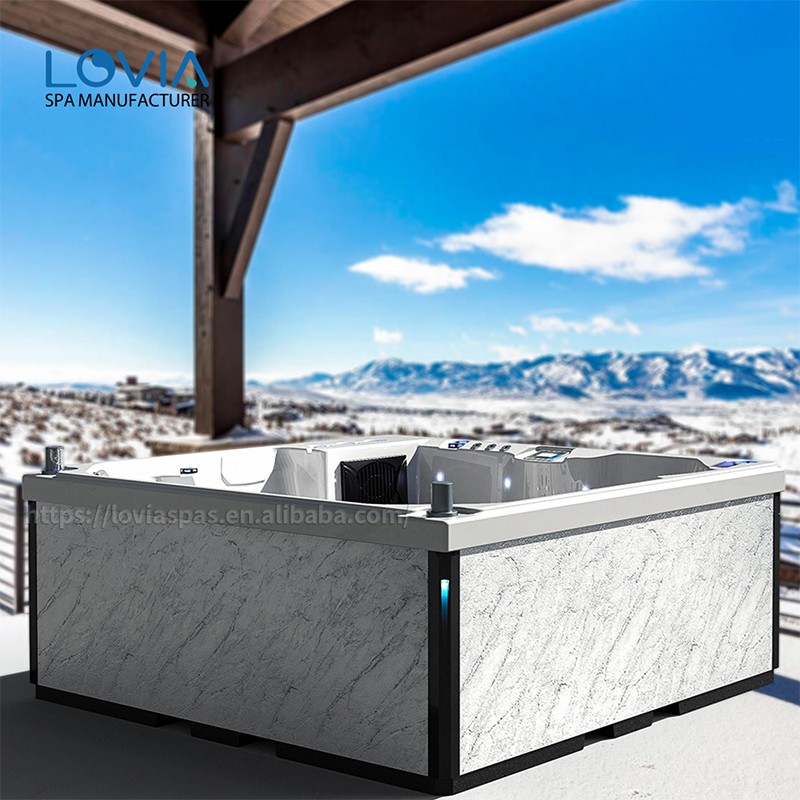
Does the pH level need to be changed if it's too high?
Whether a complete water change is necessary depends on the degree and cause of the high pH.
1. Slightly high (pH 7.8~8.2): Adjust with a pH lowering agent; no need to change all the water.
2. Severely high (pH ≥ 8.5): If the water becomes cloudy, scaled, or has an odor, partially drain the water and then add fresh water. If there are already deposits inside the pipes, it is recommended to completely drain and clean the system.
Timely treatment not only restores water quality but also prevents further damage to the spa jacuzzi bathtub from highly alkaline water.
Maintaining a Stable pH Level in Your Spa Jacuzzi Bathtub is Crucial
When the pH level of your spa jacuzzi bathtub is too high, it can lead to a series of problems, including cloudy water, reduced disinfection efficiency, scale buildup, and dry skin.
Therefore, regular testing, scientific adjustments, and proper maintenance are key to maintaining a good user experience.
The ideal pH range (7.2~7.8) not only ensures comfort and safety but also keeps the spa jacuzzi bathtub's hydrotherapy functions at their best.
Stable water quality is the foundation for extending the lifespan of your equipment and maintaining a healthy bathing experience.
What Shipping and Logistics Options Are Available?
LOVIA SPA exports globally from Huangpu Port, China. We cooperate with trusted logistics partners to provide sea and land shipping options. Buyers can choose CIF, FOB, or EXW terms based on purchasing needs. Our team handles packing, documentation, and customs clearance to ensure safe delivery. Wholesale buyers benefit from consolidated shipments and low-cost transport quotes.
As an experienced exporter and manufacturer, LOVIA SPA guarantees secure, on-time, and cost-effective shipping solutions for all orders.


